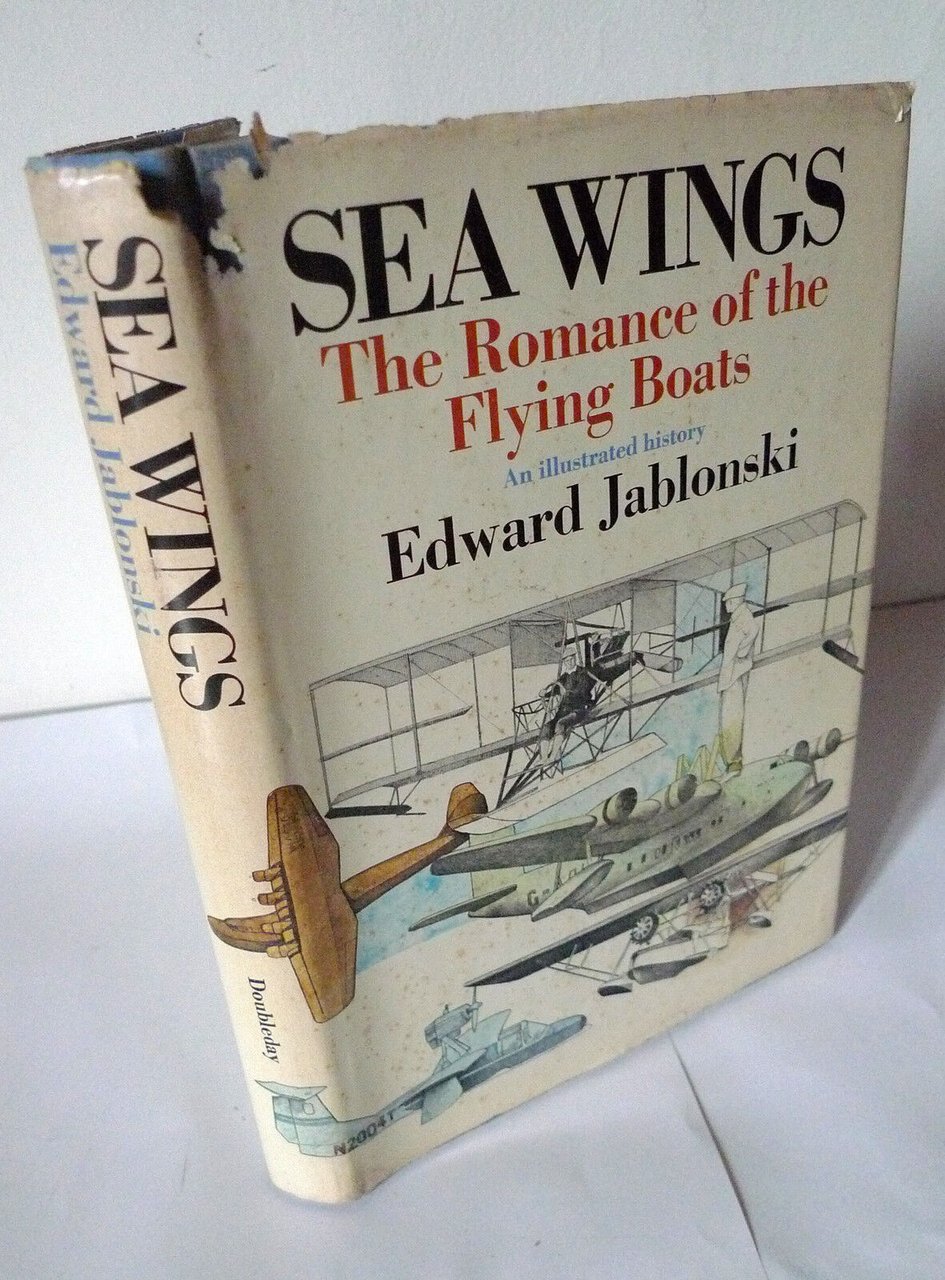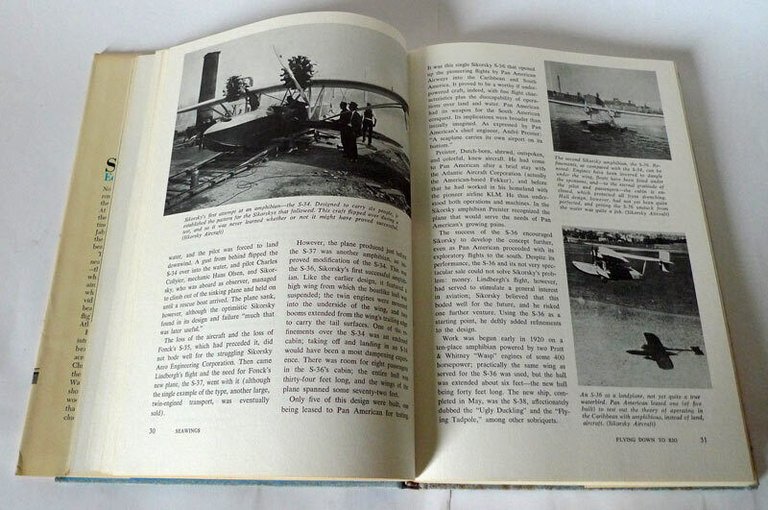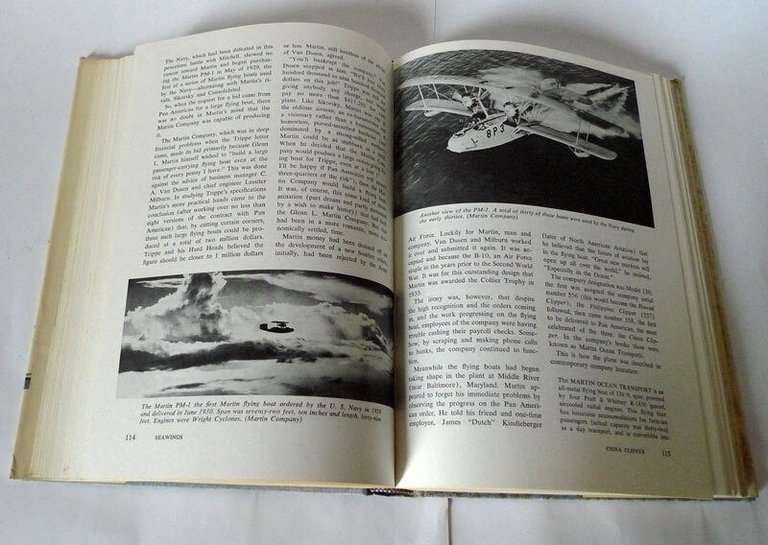


Libri antichi e moderni
Jablonski,SEAWINGS.The Romance of the Flying Boats,1972[aviazione,idrovolanti
12,90 €
Modo Infoshop
(Bologna, Italia)
Le corrette spese di spedizione vengono calcolate una volta inserito l’indirizzo di spedizione durante la creazione dell’ordine. A discrezione del Venditore sono disponibili una o più modalità di consegna: Standard, Express, Economy, Ritiro in negozio.
Condizioni di spedizione della Libreria:
Per prodotti con prezzo superiore a 300€ è possibile richiedere un piano rateale a Maremagnum. È possibile effettuare il pagamento con Carta del Docente, 18App, Pubblica Amministrazione.
I tempi di evasione sono stimati in base ai tempi di spedizione della libreria e di consegna da parte del vettore. In caso di fermo doganale, si potrebbero verificare dei ritardi nella consegna. Gli eventuali oneri doganali sono a carico del destinatario.
Clicca per maggiori informazioniMetodi di Pagamento
- PayPal
- Carta di Credito
- Bonifico Bancario
-
-
Scopri come utilizzare
il tuo bonus Carta del Docente -
Scopri come utilizzare
il tuo bonus 18App
Dettagli
Descrizione
Edward Jablonski,
SEAWINGS.
The Romance of the Flying Boats.
Doubleday & Company, Inc.,Garden City,
New York 1972,
copertina rigida, rilegatura in tela,
sovraccoperta illustrata, 26,5x18,5 cm., pp.259,
numerosissime illustrazioni in bianco e nero,
illustrazione di copertina: JAMES COOPER,
testo in inglese
isbn: 0-385-06946-4,
peso: g.800
CONDIZIONI DEL LIBRO: buone,
macchie e strappetti con mancanze alla sovraccoperta,
imperfezioni alla copertina in tela,
per il resto ottime
Contents
Prologue 1
1 “Gentlemen Adventurers” 16
2 Flying Down to Rio 25
3 Caribbean Laboratory 41
4 “Ugly Duckling” 61
5 American Clipper 81
6 The Great Circle, or The Big Runaround 95
7 China Clipper 113
8 Atlantic Conquest 147
9 B314 172
10 Warwings 191
11 Swan Song, Variations and a Coda 234
Acknowledgments 247
Bibliography 249
Index 251
dalle note di copertina:
SEA WINGS
Edward Jablonski
No airplane ever quite captured the
romantic fancy of the American people
the way the majestic “flying boats” did.
At their peak, these seaplanes blazed
the way for transoceanic and intercon-
tinental flight. In this book, Edward
Jablonski traces the exciting rise and
the abrupt decline of these uniquely
beautiful aircraft.
The era of the amphibians was
neatly enclosed by the two world wars
—the first suggested the possibilities,
while the second produced a series of
aircraft that made them obsolete. But
while they lasted, the amphibians pro-
vided the means to open up the Carib-
bean and Latin America to American
flights, and then to stretch across the
Atlantic and Pacific.
Edward Jablonski takes his readers
into the cockpit with Charles Lind-
bergh, on the exploratory flights
across the Caribbean, with Winston
Churchill, piloting his own plane across
the Atlantic at the height of World
War II, and with Howard Hughes,
showing the world that his famous
wooden “Spruce Goose”— bigger even
than a 747 — would really fly. He in-
cludes portions of the flight log of the
first China Clipper, and tells how these
celebrated seaplanes helped make Pan
American Airways and its leader, Juan
Trippe, giants of commercial aviation.
Filled with fascinating anecdotes
and extensively illustrated, Sea Wings
will delight every reader who loves the
air—or the sea, for it tells the story of
the magnificent ships that conquered
both.
Edward Jablonski, though he served in
the field of artillery during World War
II, has been an aviation enthusiast
since he was a boy in Bay City, Michi-
gan. Historian, biographer, and critic,
he has written a number of books on
aviation, including Flying Fortress and
Airwar, a four-volume history of the
air battles of World War II. Among his
other books are biographies of George
and Ira Gershwin and Harold Arlen.
Articles of his have been published in
Saturday Review, The Reporter, HiFi/
Stereo Review and the American Rec-
ord Guide. A member of the Society of
the World War I Aero Historians and
the American Aviation Historical So-
ciety, Mr. Jablonski makes his home in
New York with his wife and their three
children.
The loudspeakers in millions of living rooms reverberated to the rumble of
engines as Captain Musick began moving the China Clipper, carefully out
into San Francisco Bay. A band burst into the strains of the “Star Spangled
Banner.” The sounds of the music and the engines mixed in a thrilling
concatenation . . .
“Our departure from Alameda was spectacular, though we didn’t plan
it that way,” second engineering officer Victor Wright recalled some years
later. “After leaving the waterfront ramp Captain Edwin C. Musick circled
on the water a few times to warm up the engines and then headed up the bay
toward the looping wires of the San Francisco-Oakland bridge, then being
built. As we left the water a convoy of escorting planes closed in behind us.
“It had been our intention to fly over the bridge, but Musick quickly saw
that with the engine cowl flaps open he wouldn’t be able to get up enough
speed to clear the wires, so he nosed the Clipper down at the last moment and
went under the bridge cables, threading his way through the construction
wires. We all ducked and held our breaths until we were in the clear. I think
the little planes must have been as surprised as we were, but they all followed
us through.” The implications of this incident are chilling, considering the
international fanfare, the speeches, the massed crowds of witnesses, the great
expectancy connected with the takeoff of the China Clipper.
Official time of takeoff, San Francisco time, was 3:46 P.M. The entire
crew cooperated on keeping a log of the historic flight, much of it written in a
kind of poetry only airmen are capable of, some of it in the matter-of-fact tone
of the trained technician, all of it temptingly (at this late date) quotable; the
first entry is marked, Friday, November 22:
“Before we were beyond sight of San Francisco Bay’s holiday dress in
honor of our departure, a great mass of clouds, the close companions of our
now veteran Pacific airmen, covered the entire horizon. The constantly
arriving weather reports from our ocean stations turned us southward, close
to the rim of the most southerly surveyed course.
“The Pacific welcomed the first modern Clipper bound for the Orient
with a blazing sunset. .

